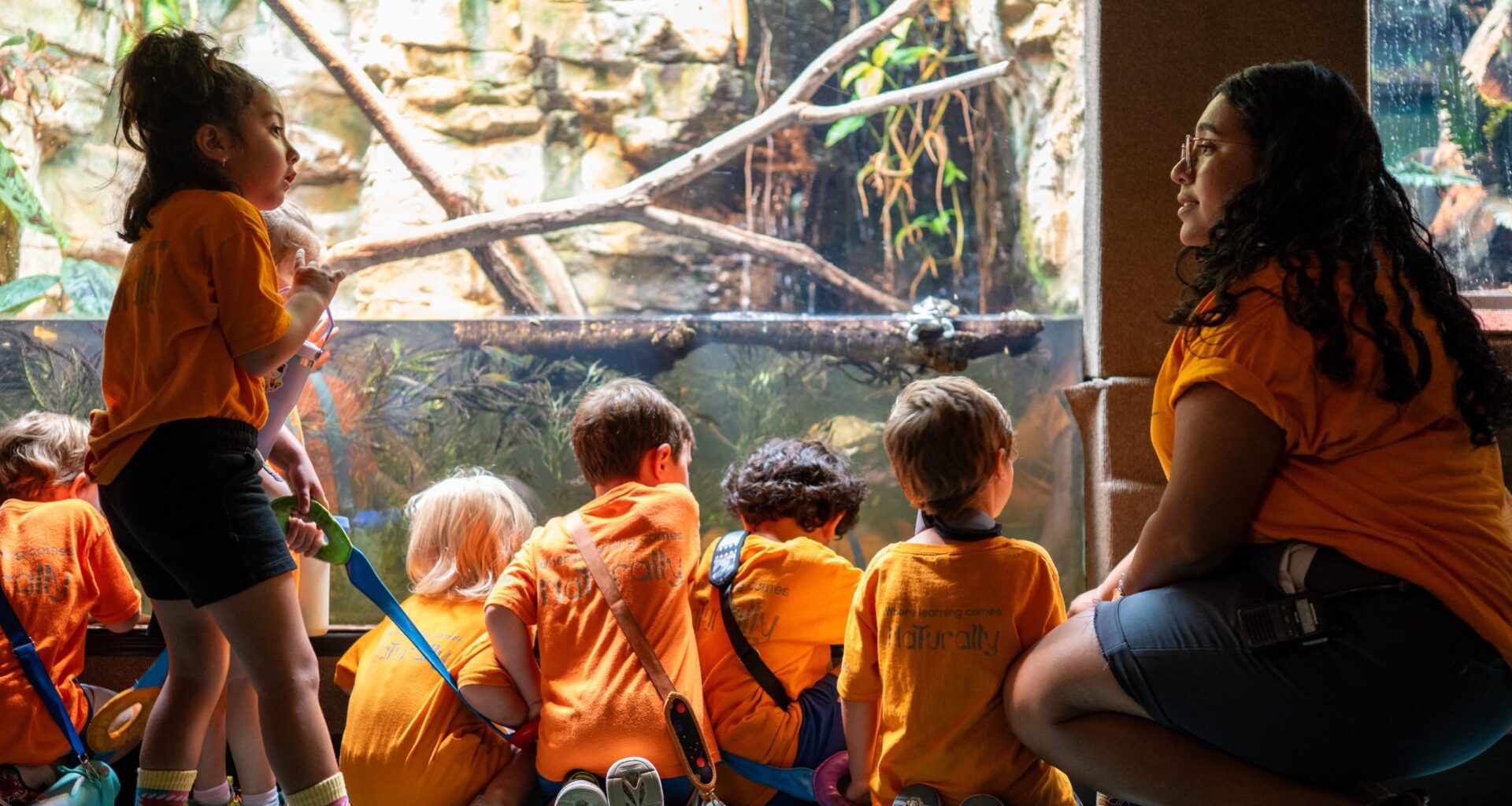Less than a mile from the San Antonio Zoo stands a children’s learning oasis where “nature becomes the teacher.”
The Will Smith Zoo School is a private preschool for children ages 3-5 that was established by the San Antonio Zoo in 2004 to build on the menagerie’s two pillars: conservation and education.
The Zoo School has 10 classrooms, seven “outdoor learning environments” and currently serves about 220 children. Its unique approach earned the school a Leadership in Energy and Environmental Design Platinum certification for its sustainable construction.
“The site is unique in the sense that it brings nature to the site, versus us necessarily having to go to nature, which is different than everywhere else,” said school director Zachary Stingl as he walked through Mimi’s Front Porch, one of the outdoor learning environments best suited for mud play.
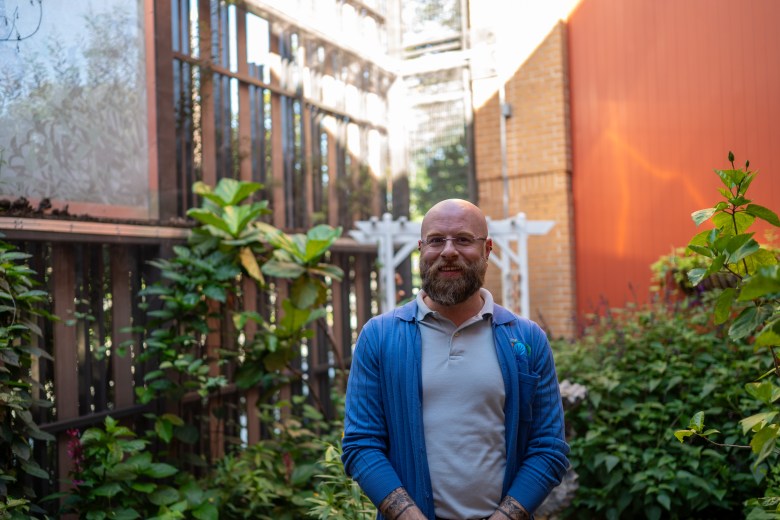 Zachary Stingl, director of the Will Smith Zoo School, poses for a portrait in the school’s butterfly garden. Credit: Diego Medel / San Antonio Report
Zachary Stingl, director of the Will Smith Zoo School, poses for a portrait in the school’s butterfly garden. Credit: Diego Medel / San Antonio Report
Over at the Butterfly House, another of the school’s outdoor learning spaces, Stingl said students can see the life cycles of insects unfurl in the lush greenery of the house, carefully holding pill bugs, or “roly-polys,” in their hands and playing with caterpillars.
The outdoor learning environments help uphold the Zoo School’s mission of providing nature-based learning for students.
Unlike traditional education, nature-based learning lends itself to sparking curiosity in students without having to rush their development, Stingl said. Students absorb information as they explore the outdoors and naturally ask more questions when they realize it’s a “safe environment to do so.”
More than simply bringing worksheets or toys outside, nature-based learning is about completely incorporating nature as the classroom and teacher. For example, when students learn to count, they do so using things found in nature like birds.
“We’re not trying to force-feed them facts and figures,” Stingl added.
Zoo School students spend 70% of their days outdoors, including instructional time, play time and daily visits to the San Antonio Zoo down the street.
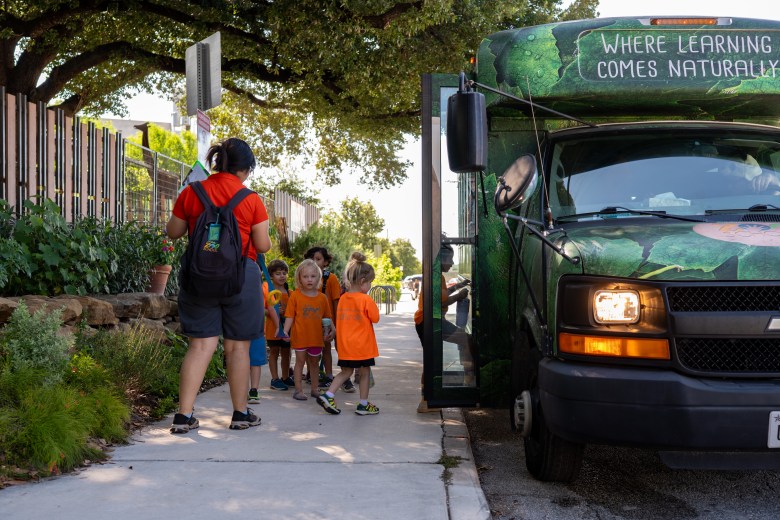 Children at the Will Smith Zoo School board a shuttle bus to the San Antonio Zoo for their daily lessons. Credit: Diego Medel / San Antonio Report
Children at the Will Smith Zoo School board a shuttle bus to the San Antonio Zoo for their daily lessons. Credit: Diego Medel / San Antonio Report
Accredited by the state and the National Association for the Education of Young Children, the Zoo School has a ratio of 16 students to three teachers, well below the state’s requirements.
The school also focuses on letting students lead their learning through their own curiosity. Stingl said students can identify what they’re interested in and teachers then tailor lessons around those subjects to teach the necessary skills.
“Sometimes they get obsessed with flowers, … sometimes they get stuck on dinosaurs,” he said.
Families enrolled at the school come from all over, Stingl said, including Lytle, Uvalde and even Austin.
Depending on how many days a week a family enrolls their child at the school, tuition can range from $640 to $1,300 a month, but tuition assistance based on a sliding scale is available.
This year, Stingl said the school processed more financial assistance than it has in the last three years. With the passage of school vouchers in Texas, or education savings accounts, it’s possible interested parents may eventually tap into additional funds to pay for private preschool tuition, but Stingl says the school won’t be part of the program for the first year vouchers are expected to go into effect.
However, the Zoo School is launching a pilot kindergarten program in partnership with Seguin Independent School District that would serve up to 20 students starting in 2026. After the program’s first year, the school will look into vouchers, Stingl said.
“It’ll be the first true nature-based kinder program here in Texas.”
Adding a kindergarten class would be only one in a long list of changes the Zoo School’s been through.
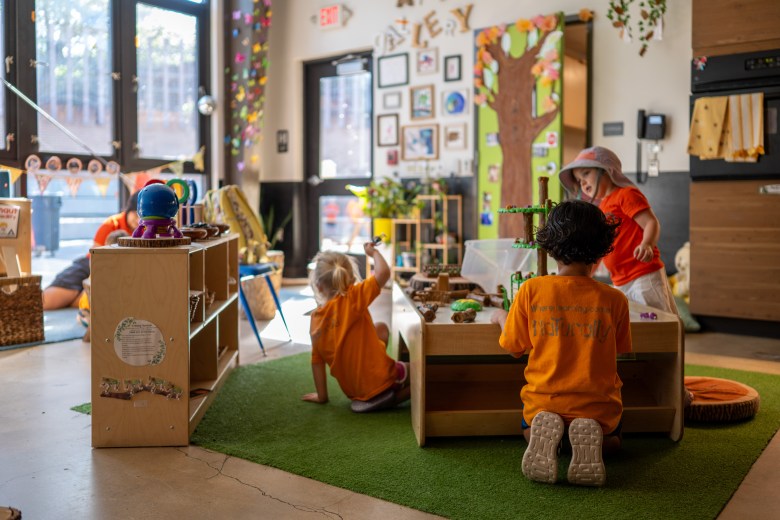 Children play with toys around a table in a classroom at the Will Smith Zoo School. Credit: Diego Medel / San Antonio Report
Children play with toys around a table in a classroom at the Will Smith Zoo School. Credit: Diego Medel / San Antonio Report
Named after the late 8-year-old son of local philanthropist Susan Naylor, the Zoo School started out in a few rooms inside the zoo’s education center in Brackenridge Park. It later moved to its current location, which housed the Sunshine Cottage School for Deaf Children from 1947-2010 and later the charter school KIPP Esperanza Dual Language Academy.
The Zoo School moved to its current address in 2017, effectively turning the property from black-top cement ground to a “rewilded” environment.
The upper yard of the Zoo School houses Charlie’s Garden, a vibrant edible garden with a gazebo and water fountain named after Naylor’s younger son, who also died at a young age. Students can pick fruits and vegetables like tomatoes, eggplants, green beans and papayas from the garden, later using them in the school’s kitchens.
Other outdoor learning environments include a small cave where students put on plays, a sandpit, a large birdhouse where students are known to snuggle up with books from the school’s library and a wooden watch tower with colorful hanging hammocks.
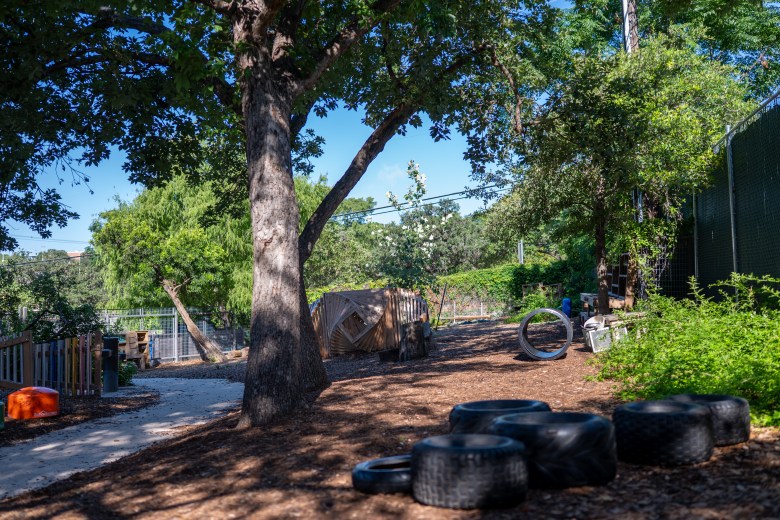 The upper yard, an outdoor classroom, at the Will Smith Zoo School. Credit: Diego Medel / San Antonio Report
The upper yard, an outdoor classroom, at the Will Smith Zoo School. Credit: Diego Medel / San Antonio Report
Perhaps the most unique aspect of the school is the incorporation of daily zoo visits, where students spend about an hour at the zoo each day learning about and alongside different animal groups.
“We tailor our learning here, and then we just extend the classroom to the zoo,” Stingl said.
This model of learning is so different traditional schools that Stingl said the school doesn’t have to worry about marketing itself. Most families are referred to the Zoo School by word-of-mouth, and the San Antonio Zoo will soon form an LLC called Nature Ed to expand nature-based learning with satellite schools in other cities with zoos.
Originally from Minnesota, a state with several nature-based learning programs, Stingl has many years of experience at traditional school districts and charter networks, and he said he prefers the “synergy of community” that supports the Zoo School’s mission.
Soon, the school will be able to track its impact by partnering with the University of Texas at San Antonio, where research faculty and students will survey and record the development of Zoo School alumni.
“It’s really refreshing to see kiddos who are happy to learn every day and parents who are happy to send their kiddos to school, and they don’t question the value of what we’re doing,” he said.
